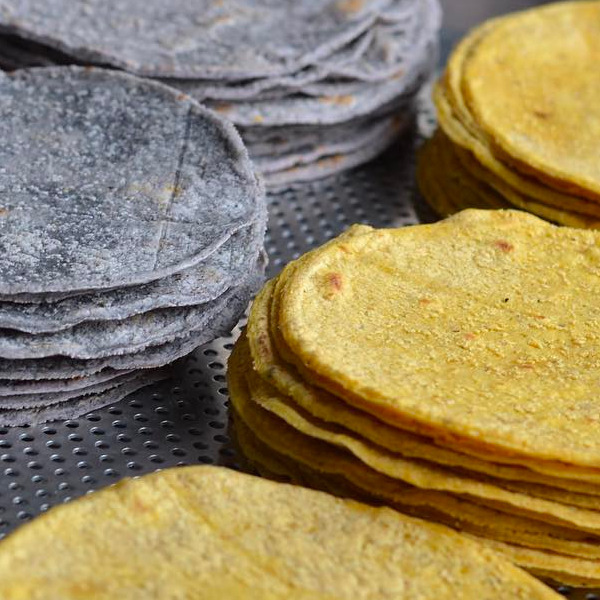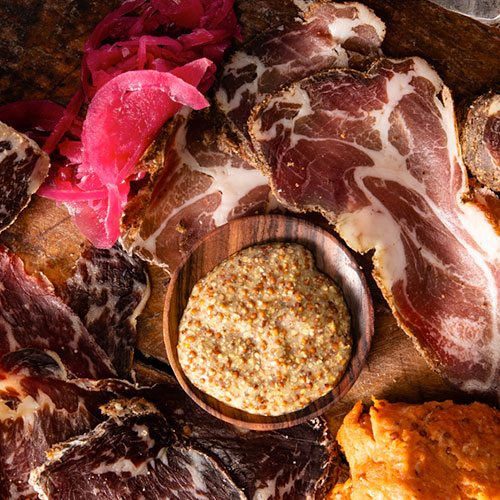Chris and Mollie Eley draw on the flavors of Indiana and the greater Midwest at Indianapolis’s Smoking Goose Meatery. You’ll see spruce tips in the bresaola, local mead in the stagberry salame, and local maple sugar in the bacon rub. We caught up with Chris to talk about what he’s done at the Meatery, a small-batch butcher shop with a growing national audience, since he opened it as a sequel to his popular Goose the Market in 2011.
Do you consider your charcuterie Midwestern?
From the beginning, we’ve taken the playbook of the Italians, and even the French, of using what is specific to the area. Take soppressata. It can have so many different styles and flavor profiles in Italy, depending on where you are. It’s like a dialect of a language that changes throughout the country. That’s always been our philosophy, too. We go to the market or forage and see great things. Why not use those things before we source something from elsewhere?
What are some of the local ingredients you like to use?
I like using honey, maple syrup, and hickory syrup. I love all the mushrooms we can get. We dry them and use them in sausages and salami. We forage for spruce tips and juniper berries, which have an immensely different flavor than what you get in a spice container. They’re more floral and not as dry or spicy. Indiana is known for persimmons, and we make our South Cider Salame with persimmons and [Indianapolis-made] New Day cider. I look for artisan producers that have similar values and make high quality products, so we also use beers from Sun King Brewing and 3 Floyds Brewing and spirits from 8th Day Distillery, which is around the corner from us. It’s not that we have to use things from the Midwest, but we have things that are really good here. If our juniper berries weren’t the best, we wouldn’t use them.




